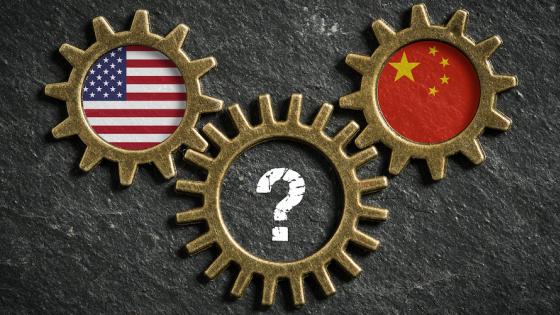Perhaps lost in the attention given to the summit last week in Hanoi between the US president and North Korea’s Kim Jong-Un is the worsening income disparities among South Koreans. Behind the per capita income figure approaching $40,000, membership in the OECD, and the success of some of its world-class corporations like Samsung and Hyundai is the unpleasant truth that Korea’s internal peace is being upset by widening inequality and the reappearance of poverty.
Latest figures released by Statistics Korea show that the bottom quintile of the income distribution lost 17.7% of its income in the fourth quarter of 2018 alone. This group, the bottom 20%, had already lost 7% of income in the third quarter, so that in a period of six-months, the most vulnerable in South Korea have seen a quarter of their incomes disappear. How is this possible in an economy ranked eleventh in the world by GDP? And how is this possible for a country that for decades was the poster-child for inclusive and broadly shared income gains?
The administration of President Moon Jae-In came to power on a platform of change, but so far it has presided over a period in which the poorest segments of Korean society have seen their fortunes plummet. As early as 2013, the Korean economy exhibited a stark concentration of income in the top decile of 45% of national income, as compared with 31% in Australia and 22% in Malaysia. This contrasted with a top decile concentration of 29% in 1995. This dramatic rise in income inequality – an almost 50% increase in income concentration – has coincided with a sharp rise in poverty measures. The poor in South Korea, defined as those earning less than half the median income, now number almost 15% of the population and they are largely found among the elderly. Almost half of those classified as elderly are also classified as living in poverty.
These shocking statistics emerge from a society where early retirement and longevity have collided, where the distinction between regular and non-regular employment is stark, and where direct taxation of personal income is anaemic. Efforts to help the elder-poor through dramatic increases in the minimum wage have backfired as many more were laid off than were helped by this ill-advised policy action last year, compounded by another hike scheduled for this year. With birth rates woefully below replacement, familial safety nets have largely disappeared and with Korean households being among the most highly indebted (for example, OECD data reveals debt/disposable income ratios of 185%), it is not clear where relief will come from.
South Korea’s employment problems seem to be focused on the young and the old. The young suffer from underemployment, which seems odd given high educational attainment on standardised tests and a new digitally capable cohort of school leavers; yet the employment outlook is clouded by a reluctant formal sector, less need for labour in production, and a largely uncompetitive global service sector. Employment difficulties facing the older workers stem from non-regular and part-time employment that bring in too little income. There have been only half-hearted attempts at negative income taxes or earned income tax credits, despite a fairly robust fiscal system.
Recent IMF analysis of Korea’s fiscal situation points to some areas for reform that could lay the foundation for a healthier distribution of income. Since expenditures, especially related to an aging population, will grow and Korea’s future (potential) growth rate is limited, the answer must lie on the revenue side. At present, Korea’s tax take of 22% of GDP is too low, well below comparator countries and insufficient for future spending if debt is not to explode, as the IMF has noted. Broadening the tax base and increasing the low 10% VAT (perhaps with some exemptions for necessities or means tested consumption) are possible policy avenues to explore. Increasing payroll contributions, which are on the low side, would help revenue but also hurt employment, so it should only be considered with exemptions for part-time or elder-employment.
The final piece of the solution for Korea’s inequality woes may well lie in its wealth pattern. Although Credit Suisse rates the wealth concentration as moderate with the top 1% only commanding 26% of the nation’s wealth (a wealth Gini Coefficient of .67), it should also be noted that the top decile commands two-thirds of national wealth and that there is a strong connection between wealth of households and economic opportunity. What kept the ‘Korean Miracle’ alive was the sense that incomes were rising and that the welfare gains were broadly distributed. That sense of combined success and shared burdens has largely vanished in South Korea. Internal harmony has been disrupted and the outlook is for further stresses on the economy, exacerbated by the industrial policies explicit in the ‘Made in China 2025’ report, and the associated issues of disruptive technology that will put pressure on labour markets and test the ability of government to manage dislocations.
In contrast to this outlook, the Moon administration has so far been at odds with the chaebol (Korean conglomerates) based on legacy issues, and it has not been able to find common ground. This is particularly dangerous in the current circumstances of trade frictions among its two most important trading partners and in light of China’s clear aspirations. All this points to the need for the effective establishment of new forms of collaboration between government and business.
In conclusion, government finds itself between a rock and a hard place. It cannot meet the expectations of the population, especially not the young or the elderly. It cannot improve the overly indebted situation of the middle class. It has difficulty establishing a fruitful dialogue with the business sector. And its institutions that have served it so well in the past, including coordinated and well executed economic policies, are seen to be wanting. Thus, the major pre-occupation with North Korea, and the hope that an economic alliance will soon be formed, may be a misguided wish. South Korea needs to fix its internal fractures before it takes on new and unknown economic challenges.



